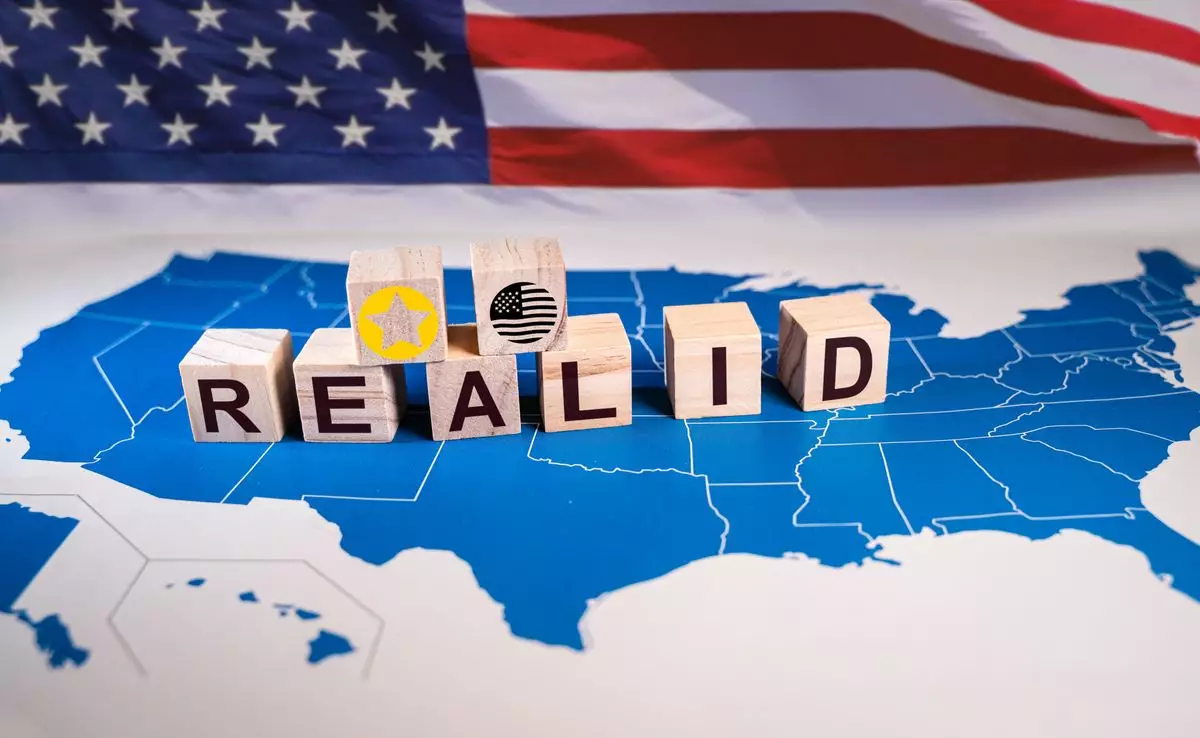The implementation of the Real ID requirement across U.S. airports marks a significant moment in the travel landscape, shaped by both security concerns and public demand for streamlined identification processes. Initiated as a recommendation by the 9/11 Commission, the program aimed to tighten security in air travel, reflecting a post-9/11 world that demanded greater vigilance. The law, signed into effect in 2005, saw numerous delays in its rollout, leaving the public grappling with a murky understanding of its implications for air travel. As the requirement came into full effect this week, it revealed not only a aging bureaucratic framework but also the evolving nature of identity verification in today’s world.
The Chaos of Implementation
With the introduction of the Real ID requirement, airports across the nation faced a deluge of last-minute preparations. It became apparent that the urgency of securing compliant identification cards led many travelers to government offices in previous days, thronging local DMVs. This scramble created a peculiar sense of chaos, with frustrated citizens sharing extensive waits and convoluted processes. As reported, the impatience of individuals, such as Michael Aceto who waited two and a half hours at a DMV for his Real ID, underscores the inherent frustrations of a regulatory overhaul. Such scenarios raise questions about the efficiency of government services and the need for systematic reforms that anticipate the needs of the populace instead of forcing citizens to adapt to abrupt changes.
Airport Experiences: A Mixed Bag
On the first day of the Real ID requirement, airports reported varying experiences with security wait times, highlighting the uneven implementation across different locations. Philadelphia International Airport took proactive measures by employing TSA agents to pre-check IDs, a move designed to mitigate confusion and streamline the security process. Conversely, reports from facilities like LaGuardia suggested much shorter wait times, potentially illustrating a more organized approach to managing the influx of passengers. This inconsistency raises critical issues about the resource allocation and training needs of airport staff during transitions of this nature.
Airports boasted a relatively smooth operation overall, which contradicts the concerns raised by numerous citizens about the initial chaos leading up to the deadline. Who truly benefitted from the system’s apparent ease on the day of enforcement? Did established travelers fare better than the average passenger navigating a new requirement for the first time?
The Role of Information and Communication
As the Real ID requirement loomed, communication played a critical role in smoothing its transition. The flyers distributed by TSA served as a direct channel to inform travelers about what they lacked and what was needed for future flights. However, the effectiveness of this communication is debatable; many passengers reported confusion about acceptable forms of identification and what additional screenings might entail. Shouldn’t the government focus more on comprehensive public education, instead of relying on flyers handed out under pressure?
Data from Secretary of Homeland Security Kristi Noem, which suggested that 81% of travelers were already compliant, shines a light on the mixed reception of the ID law. By reiterating that alternatives, such as passports and tribal identification, remain valid, the administration sought to assure travelers. Nonetheless, the lingering uncertainty expressed among travelers before and during this initial phase argues for a more robust approach to information dissemination that clearly outlines the requirements without leading to doubt.
The Public’s Response: A Call for Improvement
The public reaction surrounding the Real ID deadline has been an amalgamation of support, frustration, and indifference. While many travelers are cognizant of the security needs driving these changes, the logistical reality of acquiring a Real ID did not escape criticism. This raises pertinent questions about the role of government in enacting policies that directly affect daily lives. Advocates for ease of access to identification might argue for the need for an administrative overhaul that reduces bottlenecks, such as expanding appointment availability during peak times.
Urban areas with Real ID Supercenters offered some reprieve; however, states that left citizens feeling stranded faced significant backlash. Overall, the experiences flashing across online communities reveal a population in flux, navigating the intersection of identity, security, and increased bureaucracy.
A Future of Travel Security
As the dust settles from this initial rollout of Real ID regulations, it is crucial for stakeholders to analyze the public’s experience meticulously. How can processes be streamlined for the betterment of travelers? What genuine measures can be taken to alleviate confusion moving forward? For this regulatory requirement to truly enhance security without causing widespread dissatisfaction, it is imperative to learn from these early implementations. Innovation in both technology and service delivery seems essential to strike a perfect balance between safety and convenience, ensuring that air travel remains a viable and user-friendly option for all.


Leave a Reply